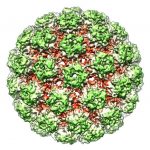 A recent review of the human papillomavirus (HPV) vaccine is has found that in the 10 years since its original release, the infection rate of HPV has been lowered by up to 90 percent in countries with high levels of immunisation.
A recent review of the human papillomavirus (HPV) vaccine is has found that in the 10 years since its original release, the infection rate of HPV has been lowered by up to 90 percent in countries with high levels of immunisation.
The review found that with more than 187 million doses of the vaccine administered in 130 countries around the world, the number of HPV infections fell by up to 90 percent in some areas, with similar decreases in genital warts and cervical abnormalities also being reported.
“Reductions in HPV infections as well as reductions in the prevalence of HPV 6/11/16/18-related diseases, as noted by decreases in Pap abnormalities, cervical pre-cancers, and genital warts, were detected within four years after vaccine introduction,” said lead researcher Suzanne Garland, from the Royal Woman’s Hospital in Australia.
HPV is a DNA virus that spreads through sexual contact. Before this vaccine, having one of more of these viruses were very common, with the CDC concluding that nearly all sexually active men and woman have had it.
“One in two of us will get it in our lifetime, so it is extremely common infection,” said HPV vaccine co-creator Ian Frazer, from the University of Queensland told the Brisbane Times. “The chances of you getting a cancer if you have the virus is about one in 100.”
What’s worse is that HPV causes more than 70 percent of all cervical cancer cases, and also increases the risk of vulva, penile, anal, and throat cancers.
“Five percent of all cancers worldwide are caused by papillomavirus infection, cervical cancer is the big one,” said Frazer, “but there are also some cancers in the throat and mouth we recognise are being increasingly caused by these viruses and then on top of that are a number of rarer cancers caused by these viruses.”
“About 20 percent of all cancers are caused by a virus infection, and about a quarter of those are caused by papillomavirus,” he adds.
Analysing the findings of 58 studies from nine different countries on the effects of the HPV vaccine, the researchers found that in high immunisation areas such as Australia, where the vaccine is provided in specialised school vaccination programs for free to all 12-year-old school children, the rates of HPV and HPV-caused diseases plummeted.
“Maximal reductions of approximately 90 percent for HPV 6/11/16/18 infection, approximately 90 percent for genital warts, approximately 45 percent for low-grade cytological cervical abnormalities, and approximately 85 percent for high-grade histologically proven cervical abnormalities have been reported,” the researchers report.
Another study from February this year showed in the US, the rates of HPV infection declined from 11.5 to 4.3 percent. That’s a 64 percent reduction, which is pretty incredible when you realise that only 37 percent of girls and 13 percent of boys between 13 and 17-years-old have received all their shots.
The US reportedly has such low levels of HPV vaccination due to controversy over the sexually transmitted nature of HPV, and the age at which kids are recommended to receive the shot. But research has shown that the vaccine is most effective when the patients have had no sexual contact to be able to spread the virus.
The research is a pretty good indication that we’re on the right track in dealing with HPV, and with proper implementation, we might some day be able to eradicate HPV-related diseases altogether.
“Observations from over the past 10 years are that the HPV vaccines, if delivered effectively to the majority of 10 to 12 year-old-girls in the developing world from today forward, should lead to the global elimination of new cervical and other HPV associated cancers by 2050,” said Frazer.
The meta-analysis has been published in Clinical Infectious Diseases, and the American study has been published in Pediatrics.
Source: ScienceAlert

















